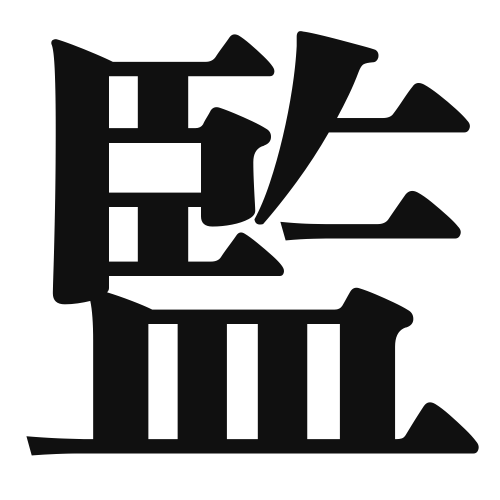1. Overview of Meaning
The kanji “監” (kan) means “to supervise” or “to monitor.” It is often associated with overseeing activities or ensuring compliance with rules and regulations.
2. Formation and Radical
Formation of the Kanji: The kanji “監” is a compound character (会意文字) that combines elements to convey its meaning. It consists of the radical for “watch” (見) and the character for “to oversee” (監). This combination reflects the act of watching over something.
Radical: The radical of “監” is 見 (mi), which means “to see” or “to look.” This radical emphasizes the visual aspect of supervision.
3. Examples of Usage
Common Words and Phrases: Some frequently used words that include “監” are 監督 (kantoku – supervision, director) and 監査 (kansa – audit).
Example Sentences in Daily Conversation:
- 彼はプロジェクトの監督をしています。 (Kare wa purojekuto no kantoku o shiteimasu.) – He is supervising the project.
- 監査が行われる予定です。 (Kansa ga okonawareru yotei desu.) – An audit is scheduled to take place.
4. Synonyms and Antonyms
Similar Kanji: A similar kanji is “視” (shi), which means “to see” or “to view.” While both involve observation, “監” emphasizes supervision and oversight, whereas “視” focuses more on the act of seeing.
Opposite Kanji: An antonym is “放” (hō), which means “to release” or “to let go.” This contrasts with “監,” as it implies a lack of supervision or control.
5. Cultural and Historical Background
Relation to Japanese Culture: The concept of supervision is significant in Japanese culture, particularly in business and education, where oversight is often seen as a way to ensure quality and accountability.
Proverbs and Idioms: One relevant proverb is “監視の目がある” (kanshi no me ga aru), which translates to “there is a watchful eye.” This phrase emphasizes the importance of being aware of supervision in various contexts.
